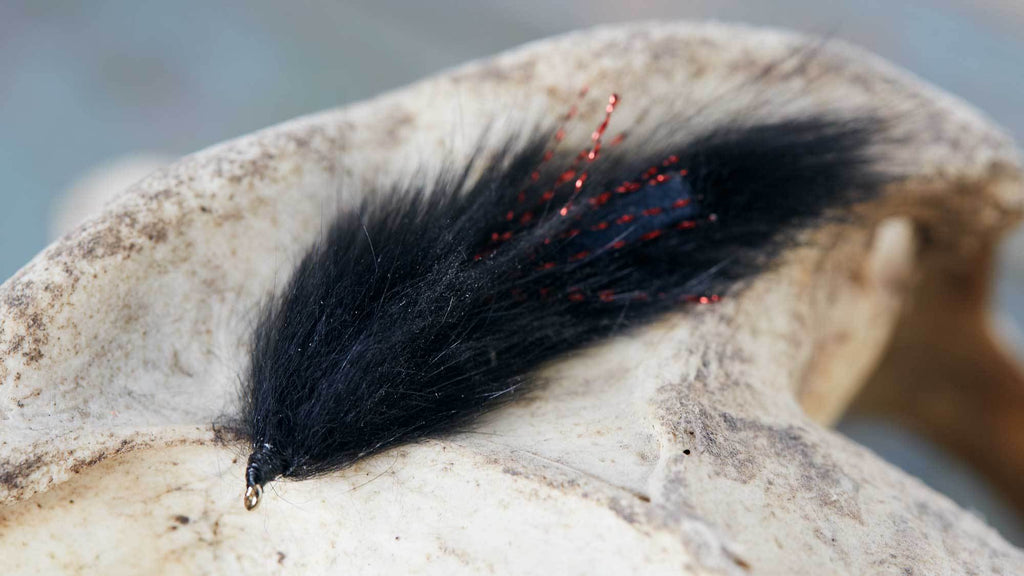
How often have you gone to your favorite fishery, anticipating exceptional fishing, yet when you arrive there, it's windy and miserable? It happens to the best of us, right? We have also all been there when you go to the lake during the summer, which results in the fish being too deep and not biting at all. It can be frustrating, but it doesn't mean that you have to pack up and go home. This is where big leech patterns come in very useful.
When all else fails, you can always rely on leeches. When leeches are tied with rabbit or marabou fur, they have a movement on them that fish find irresistible. There are several different types of patterns, including Bunny Leech, Marabou Leech, Egg-Sucking Leech, and Wooly Bugger patterns. Leech patterns can be stripped, dead drifted, or jigged to entice a take.
We will explain more about leech patterns in this guide, including some details on the different types of leech patterns that are available.
Why Use Leeches?
Before we talk about how to tie different leech patterns, let's take a look at why leeches are great for trout fly fishing and other types of fishing like this. Leeches are a vital source of trout food, as they are present throughout the entire open water season. They are especially helpful during the late fall or early spring when forage for other insects is scarce, as the main hatches have already run their source, or they are yet to start. The fact that leeches are always present makes them excellent for a searching pattern.
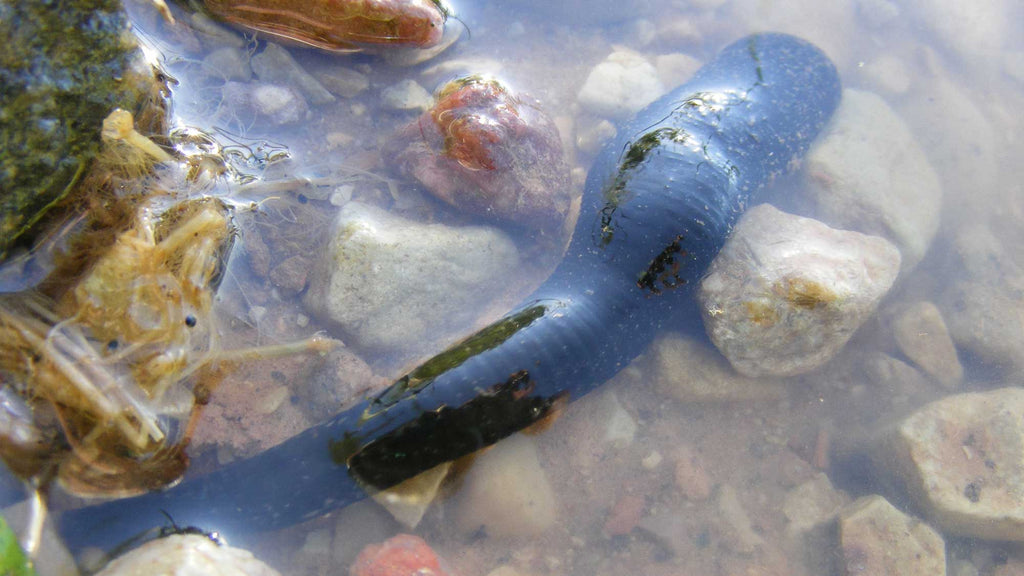
You will only get one fishable life cycle with a leech, which is not the case for a lot of the other insects. Nevertheless, it does pay to have several different colors and sizes. This is going to give you the best chance of matching the specific nature that the fish are craving at that specified time.
Leech Behavior Explained
As you may know, leeches are worm-type organisms. Most leeches will be between one and four inches, yet they can grow to six inches or more. As they are light-sensitive, leeches are active in deeper waters during the day and more shallow waters during the night. They tend to be in hiding during the brighter daylight hours.
Leeches are scavengers. They will go along the bottom of the lake, hunting for food, moving in an undulating motion, up and down. They prey on aquatic organisms and insects. They may be drawn out to feed during the day when there are big insect hatches, which makes them more available to trout during the daylight hours.
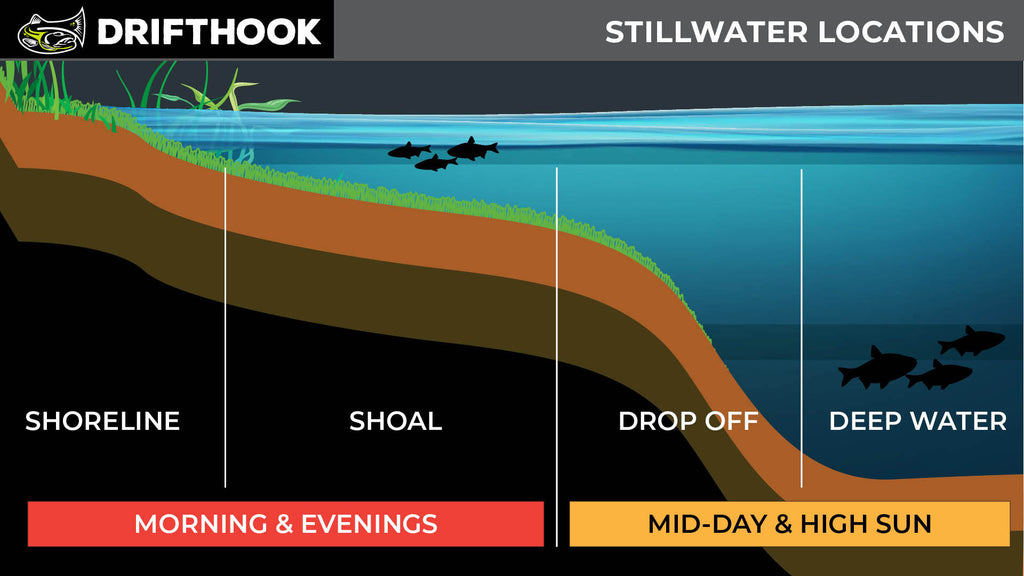
Presenting Leech Patterns in Still Water
Typically, leech patterns ought to be presented near or on the bottom of the lake. The fly should be presented as deep as 25-foot when the conditions are bright. If the conditions are dull, present the fly among the muddy and wedding bottoms of drop-offs, shoals, and shallows. There are two main methods when it comes to presenting leech patterns; the sinking line method and the floating line sinking fly method. We will give you a brief overview of both below:
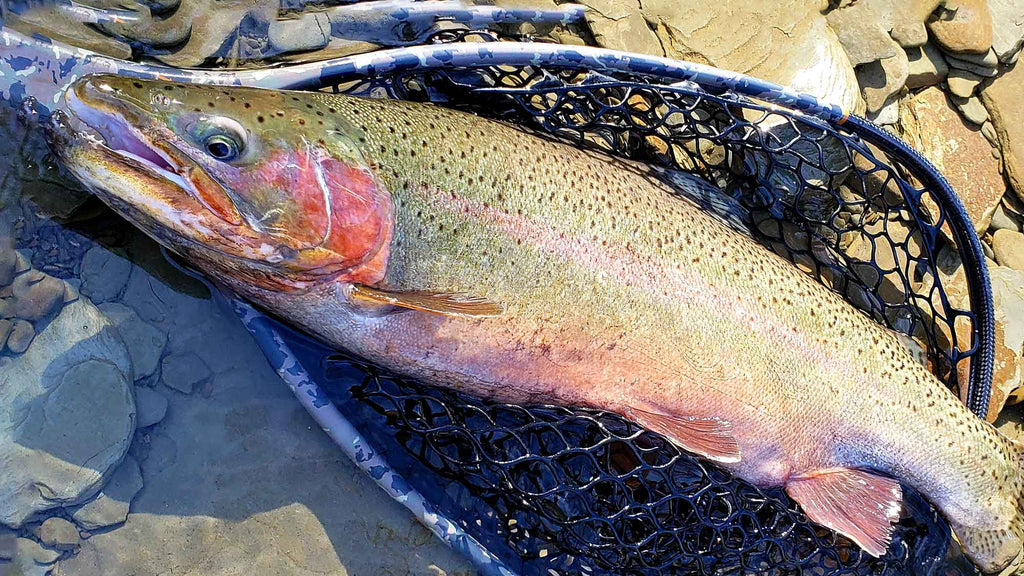
Sinking Line Method
The first method we are going to take a look at is for depths that are ten feet or greater. For this, your line should be cast along drop-offs, allowing it to settle on the bottom of the lake or near the bottom.
This might be the hardest part of still water fishing. I typically try and count to at least 15 in my head before starting the retrieve.
The fly should be worked along slowly, using short and slow retrieves so that swimming is imitated along the bottom. The retrieval needs to be varied, as does the speed until you figure out what is working that day. Then when you do, repeat the retrieve for optimal success.
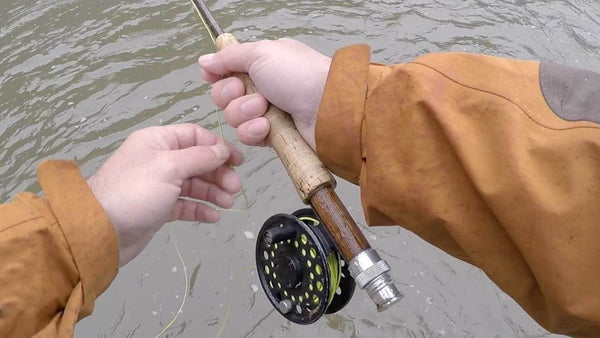
Floating Line Sinking Fly Method
As the name suggests, you are going to Utilize a floating line for this method. It should have a long tippet/leader in shallow water, which should be up to ten feet. You should utilize either a weighted fly, sinking dressing, or sinking tippet to enable a quick presentation.
The most beneficial option is to go for tippets from 3x to 6x. Make sure that there is enough tippet attached so that the fly gets to the bottom of the lake. I like to extend my leader with mono as deep as I'm going to fish and then add another 3ft of fluorocarbon to the end to help hide the fly. After casting, wait until the weighted fly has settled on the bottom or near to the bottom.
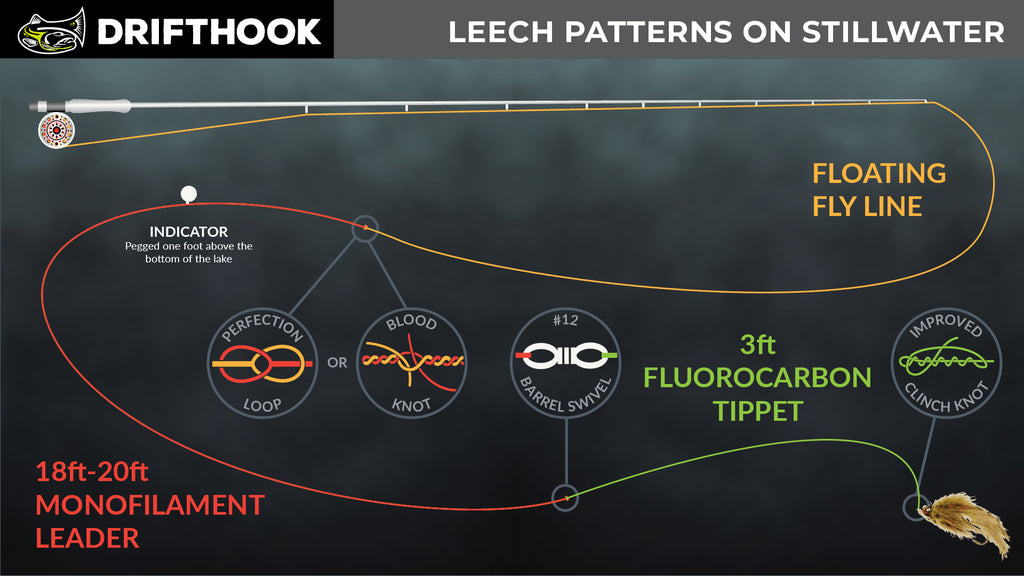
Once you have done this, use slow pulls of one to three inches to retrieve it. You should pause for around two to five seconds. Try to keep the fly along the muddy bottom or weed bed. Retrieval should always be varied, as should the speed until you discover what is working. Double the retrieve speed when there are low light conditions.
Presenting Leech Patterns in Freestones and Tailwaters
Leech patterns can be fished on rivers as well. They can be fished with a retrieve like a streamer with varied speeds, or they can be dead drifted like a nymph. Some of the largest trout out of Colorado have been caught dead drifting a leach pattern. It can be a very successful technique.
Different Types of Leech Patterns and How to Fish Them
Now that you have a basic understanding regarding why leeches are an effective choice, we are going to take a look at a few leech patterns. We will talk you through these patterns, giving you some understanding about their origin and effectiveness, as well as how to tie them. It is essential to recognize that there are other types of leech patterns available as well. However, we are going to simply talk you through some of the most effective and popular options to give you an introduction to what is out there.
Bunny Leech

This pattern can be fished for all types of game fish, including Steelhead, Salmon, Trout, sea-run trout, and Bass. The rabbit fur that this tied with comes alive in the water, tied with a few strands of flash for attracting qualities that make the water-bound preditors go wild.
It is typically made with purple or black rabbit fur. However, with a natural rabbit, you can create an excellent pattern for the coast. By selecting natural colors and cutting a narrower strip of the rabbit, you can achieve a lighter dressing. This is great for fishing in the current, and it is ideal for spring or bright sunny days as well.
When waters are cold in the spring, Fish the bunny leech slowly with light retrieves or by dead drifting. Let it sink in the water, and the tail will work its magic in the water. As water temperatures get warmer in the summer months, get more aggressive with your stripping patterns. Give it twitches fast long pulls. Another excellent technique for this pattern is the Jerk-Strip Retrieve.
The Jerk-Strip
- Retrieve start by casting out your fly to a bank or an are feeding lie. The minute it hits the water point your rod tip at where it landed.
- As soon as it sinks just a little, jerk the rod downstream about 14 to 24 inches. This retrieve will get the fly to move fast as if trying to escape a predator. The rod is moving the fly, not the retrieving hand.
- Next, return your hand to the starting position and, at the same time, strip in the excess slackline off the rod.
- Continue as you retrieve the fly back to you. Check out the short video above on the retrieve.
Marabou Leech

Another type of fly that a lot of people like to use is the marabou leech. What makes this different from other kinds of flies, like the Woolly Bugger, is the fact that the body is segmented, which is just like a real leech. This, combined with the marabou, aids in the creation of an undulating motion in the water.
You can opt for a cement-coated thread head, or if you want to add a bit more flash and weight, you could tie it with a bead head and imitation lead toward the front of the hook. This will enable the fly to get deeper faster, contributing to more movement within the water.
You can tie this pattern in all of the common leech colors. A lot of people imitate black leeches through tying it in black. However, you will also be able to tie it in maroon, olive, gray, and brown as well.
Your fly will not need to be very long. As mentioned earlier, leeches can be as long as six inches. Nevertheless, the most common ones are between one and two inches in size, and this is the size of leech that most trouts are going to go after.

If your marabou looks a bit on the ragged side, there is no need to panic. This is simply the nature of the marabou. It may even add some character to the fly as well. Plus, once there have been a few strikes, you may find that the fly appears a bit worse for wear. Again, this is not something you are going to need to fret about.
Just remember that plenty of action is going to be created in the water with this type of fly. Plus, this is only going to be added to by the segmented body that you are going to develop through putting gaps in between the marabou clumps. These clumps will fold back, one over the other, once in the water, creating a fly that looks great.
This fly is useful in several different environments. It works well in ponds, yet it also works excellently in lakes, as well as streams with slow-moving water. This is the ideal time for a sinking tip, as you want to fly to stay near to the bottom and to sink quickly.
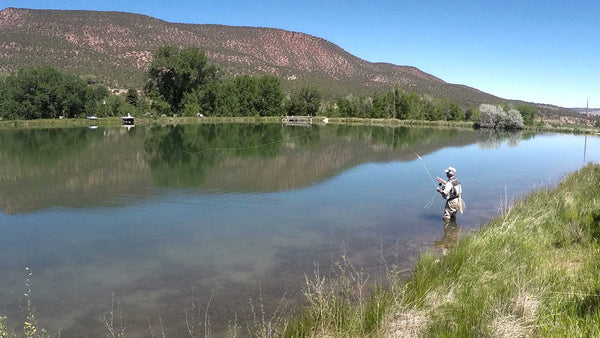
You should watch for a short strike when you are fishing this pattern. Sometimes it will appear like the trout misses the fly despite hitting it. This is because the trout anticipates the leech curling up into a ball as part of the natural defensive reflex. All you need to do is wait for the second pass, as the trout will turn around and eat the little sucker on the second pass.
Slumpbuster
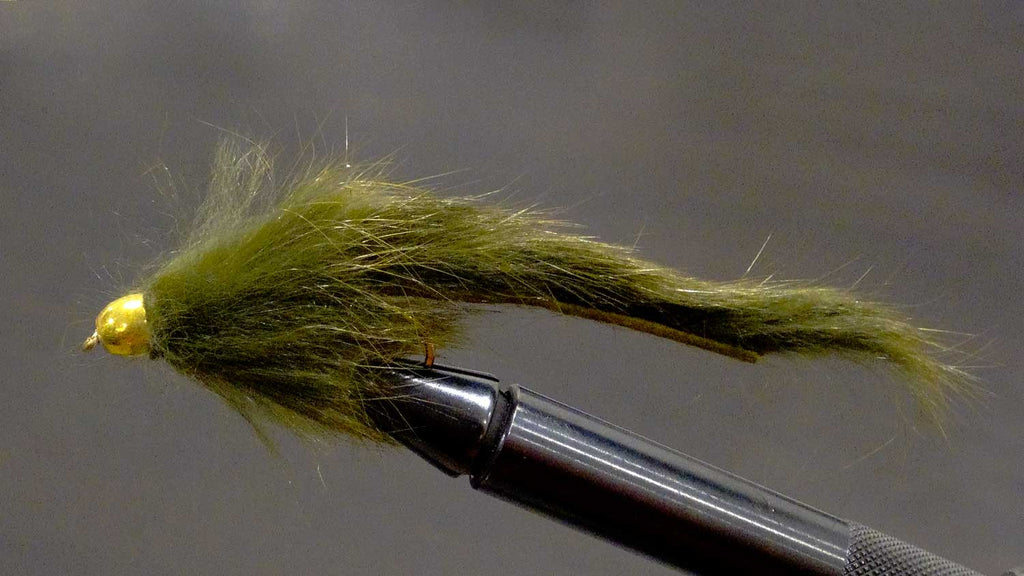
John Barr originally tied the Slump Buster, to look like a baitfish pattern. But this pattern also imitates leeches quite well. When this gets wet, it has a great silhouette of a baitfish, but when stripped in or dead drifted, the material reacts similarly to the bunny leach mimicking a live leech. It has a uni-body construction where the tail, wing, and color are all made of the same material. This unified material makes this fly extremely durable so that you can fish it all day long.
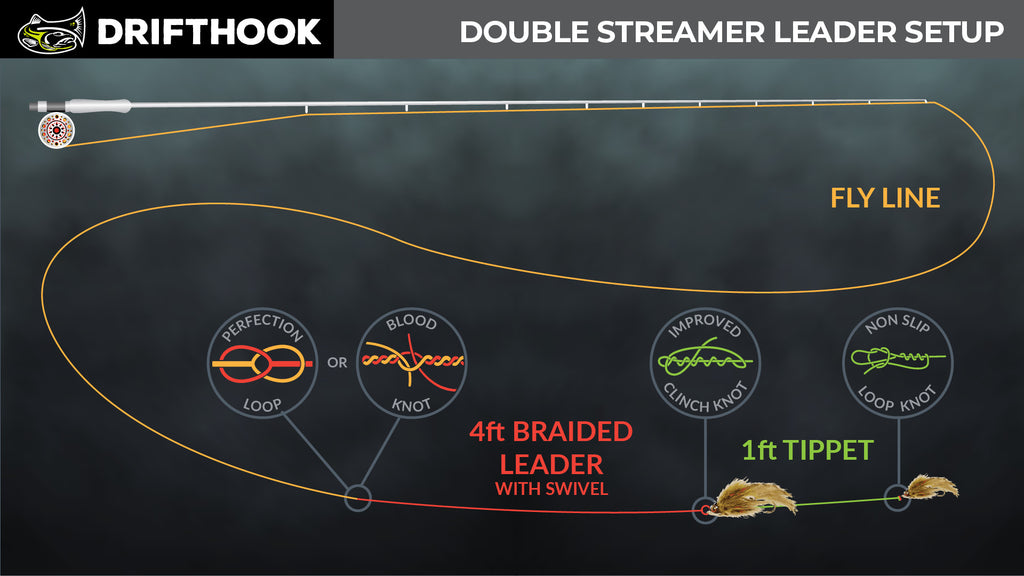
A great way to fish slump busters is in a random rig. You are using a 0 to 3x leader run down to your first fly. You are then using an improved clinch knot run another 18 to 20 inches of the line down to your second slum buster. Tie this one off with a non-slip loop knot to give it more active in the water. Check out this video on how to tie these knots if you are not familiar with them.
The slump buster can be retrieved with a typical streamer retrieve or with the jerk-strip. Try both as different fishing locations will have different results.
Woolly Bugger
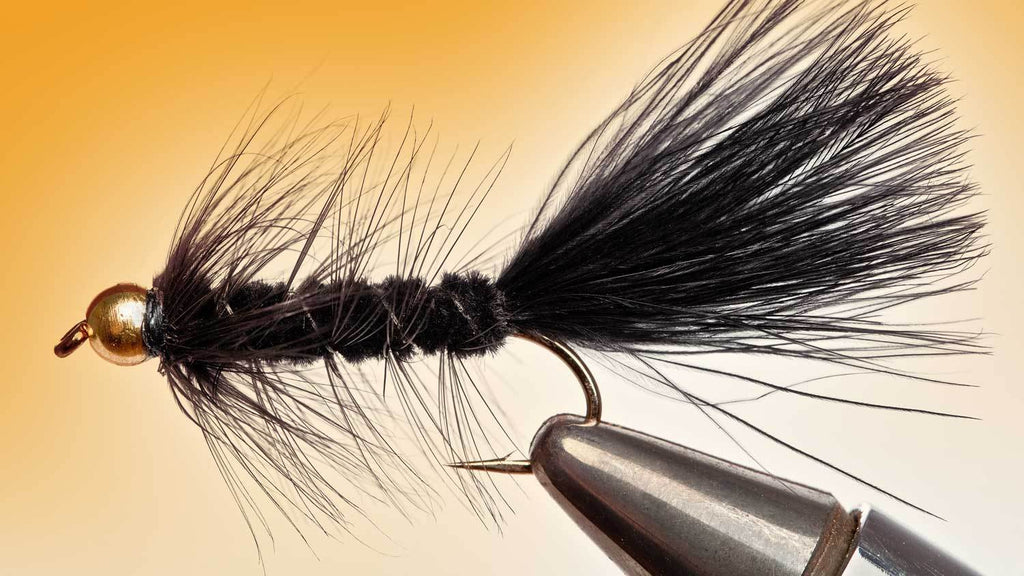
The Woolly Bugger is not my favorite pattern to fish, but throughout the ages, this has been a prevalent and versatile fly. The marabou tail of this, as well as the body that tends to be a feature, suggests leeches that steelhead devour, as well as bass, and trout.
This fly becomes a killer when it is dragged across the current in front of some trout. It is a must-have if you are a fan of trout fly fishing. Some of the woolly bugger flies that are on the market today have an added flash, which is designed to enhance performance. This is beneficial because it helps to catch the eye of a predatory salmon or trout when a fast glint of sunlight is reflected on the flash in the tail.
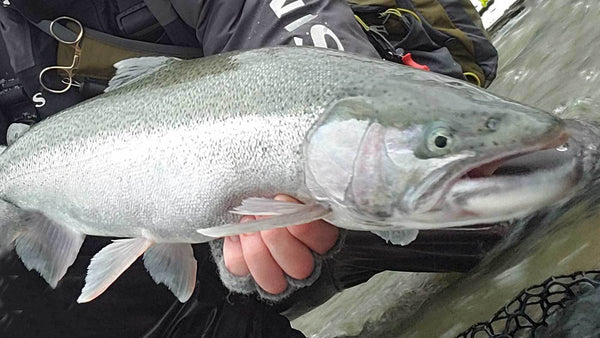
This sort of fly can be used for panfish, trout, or bass. It is an exceptional fly, and you should make sure that you have a number in your fly box. The lively marabou feather tail is one of the main features of the Woolly Bugger, which makes it look very lively to a hungry trout!
You know that something is productive when it has stood the test of time, and this is the case with the Woolly Bugger. It can be traced back to a book from 1653 by Izaak Walton. This book is the "The Compleat Angler," and the original Woolly Bugger in this book had a black hackled olive chenille body, as well as a black marabou tail.
This had been designed by Izaak to help him when fishing smallmouth bass in the streams close to where he lived. He had been attempting to imitate the dobsonfly lava. However, the original Woolly Bugger Fly pattern, as we know it today, was designed by Russell Blessing, a fly fisherman.
Woolly Buggers can be used to catch salmon, bass, and trout, both in Pacific and Atlantic rivers, as well as bluegills, northern pike, Arctic char, steelhead, and even carp. Most people would agree that you would struggle to find a fish that cannot be caught with this type of pattern.
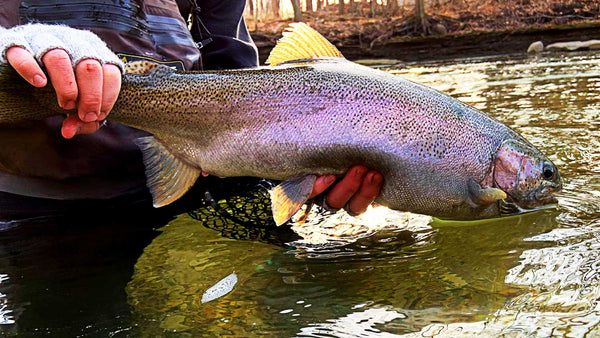
So, where does the colossal success of the Woolly Bugger come from? This is because these flies can be used to imitate several different fish food forms. Of course, leeches are what we are concerned with within this guide, yet they can also be used to imitate insect nymphs, salamanders, crustaceans, and baitfish.
Woolly Buggers are tied in purple, white, yellow, black, brown, grizzly, gray, olive, red, and green, as well as all combinations of these colors, to reach this chameleon status. You can use this pattern deep in the waters with the addition of weight, as well as fishing near the surface.
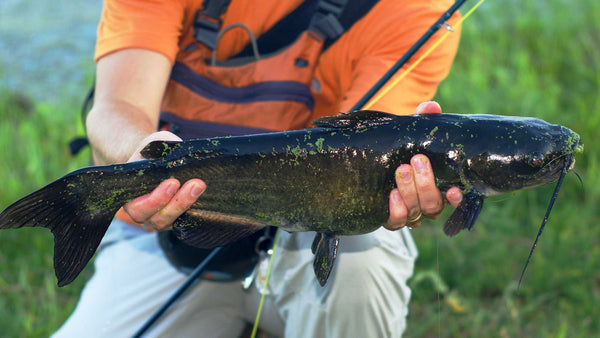
One of the great things about this leech pattern is that it is very versatile. You can cast it across the stream, allowing it to drift with the current, or you can cast it upstream and fish it like a nymph.
One of the most effective ways to fish streamer flies is casting it across the stream and then allowing the current to carry it down and across, making stripping retrieves, pulling six to 24 inches in your fly line, imparting deliberate and subtle action to the fly. This will drive fish wild, and you are bound to have some surprising hook-ups.

Fishing with the Woolly Bugger is something that is going to require confidence and patience. Because of the marabou tail and the soft saddle hackle rib, it will not need a lot of action on behalf of the angler to give this fly an undulating and pulsating look. In a river or stream, very slow or slow is the key, as the current is going to make the pattern look alive. A little more action will be needed in a lake, yet not too fast and not too much.
One of the best ways to use a woolly bugger is when you are trying to coax trout that are lurking in plunge pools, deep at the bottom, as you can get them to rise to the surface and take your presentation. They will often not do this if you have a dry fly. To be worth the effort, there needs to be more of a substantial meal.
Egg-Sucking Leeches
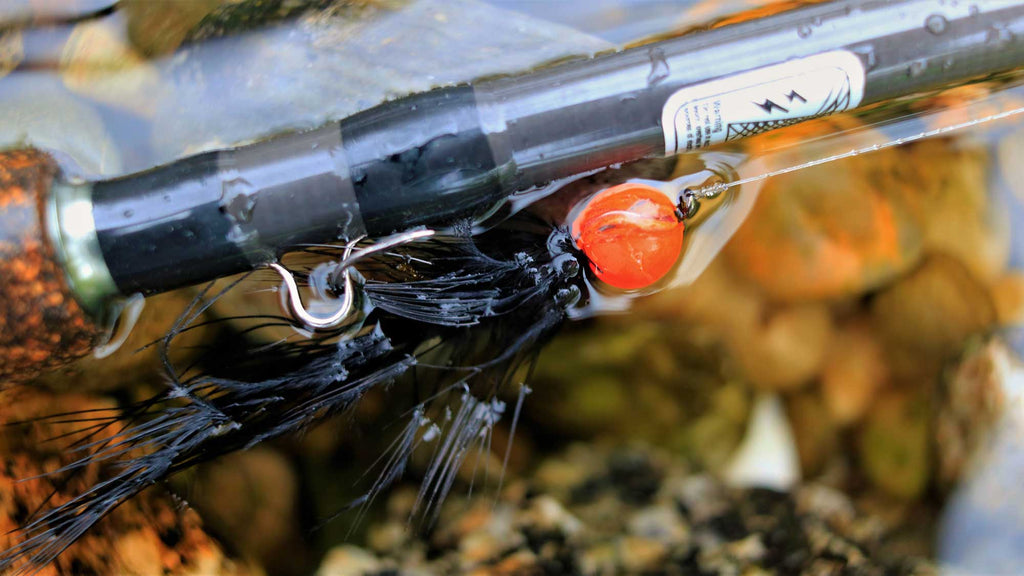 If you are looking to go after steelhead than this is the going to the most effective fly that you can tie on. Egg head flies have been around for over 200 years. And the first leech flies were tied as early as the 1700s. These bright headed flies were known to be successful in the spring spawn months but can be used year-round.
If you are looking to go after steelhead than this is the going to the most effective fly that you can tie on. Egg head flies have been around for over 200 years. And the first leech flies were tied as early as the 1700s. These bright headed flies were known to be successful in the spring spawn months but can be used year-round.
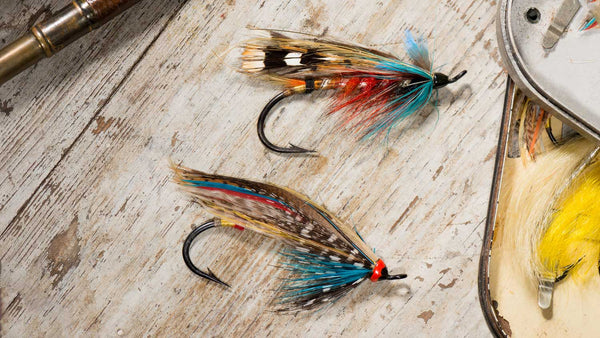
The original egg-sucking leach was said to be tied by Alaska fly fisher Will Bauer in the early '80s. It is a variation of Russell Blessing's 1967 wooly bugger. The egg-sucking leech added bright chenille around the eye of the hook to give the fly more pop on the water.
It became hugely successful and is still thriving to this day. The egg-sucking leach can be fished on a retrieve or in a dead drift pattern. It is also successful using a jig-retrieve.
The jig-retrieve is similar to the Jerk-Retrieve, but instead of moving your rod down the river, slowly move it up 12 to 24 inches. This up and down motion will get your pattern to jig in the water as it is coming back to you. Be careful because you will get most of your hits when this is on the way down, so be ready!
Final Words on Fly Fishing with Leech Patterns
So there you have it: everything that you need to know about fly fishing with leech patterns. There is no denying that this is something that you should learn more about if you are going to enjoy trout fly fishing. After all, this can help you to enhance your success rates by a considerable degree. However, it is essential to make sure that you choose a leech pattern with care based on where you are going to be fishing, and you need to make sure you use it correctly as well.
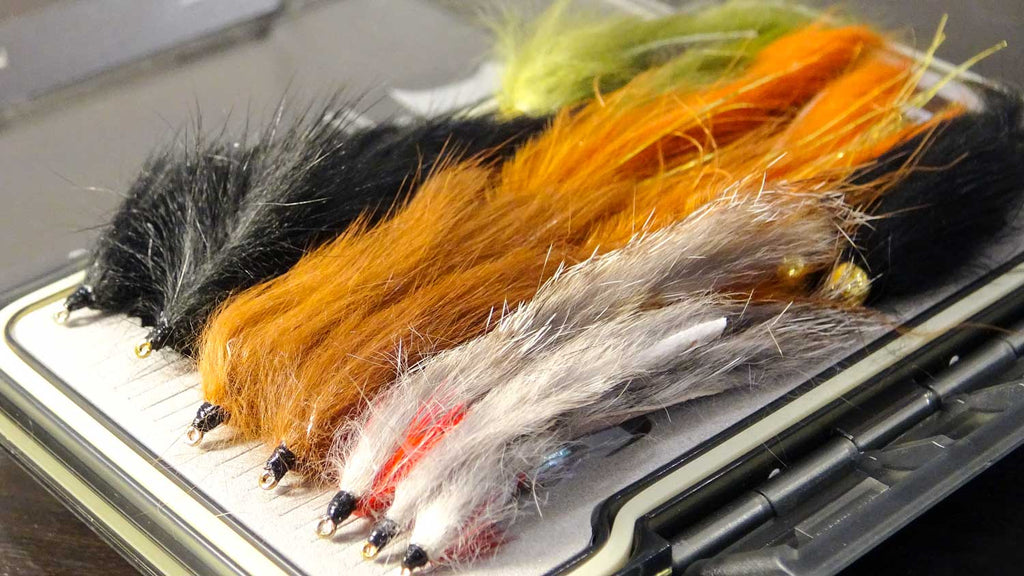
If you are interested in learning how to fly fish or are looking for a starter fly fishing kit of streamers and leaches, check out our Streamer Surge Fly Fishing Kit. Streamer fishing is exciting—you are continually moving, retrieving your line, and covering lots of water. Drifthook's Streamer Surge fly fishing kit includes 25 hand-tied Streamers, packed into a heavy-duty, double-sided waterproof fly box.
All of our products come with a 100% money-back guarantee and free shipping on all orders. And as soon as you purchase one of our kits, you get access to all of our top secrets and a lifetime discount on all of our fly fishing kits, apparel, and accessories.
There is no better way to start fly fishing or to improve your time on the water. Tight lines, everyone.
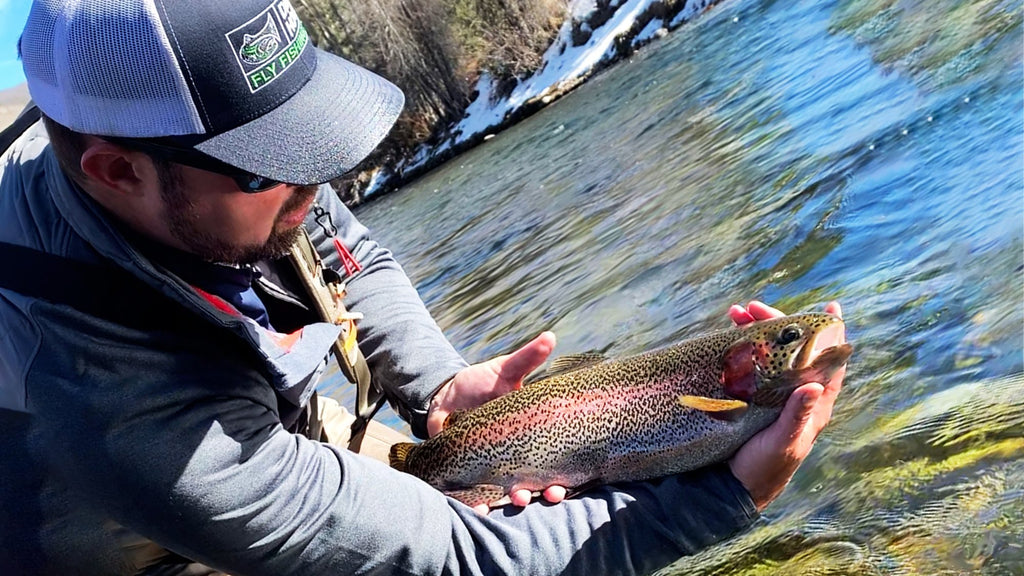
About the Author
Matthew Bernhardt, a third-generation Coloradan, grew up at the forefront of the state’s fly-fishing revolution, enjoying time on the water, side by side with experienced guides and lifelong anglers.
By combining his passion for fly-fishing with input from other experienced fly-fishers and guides and his fine arts degree from Colorado State University, Matthew spent five years carefully developing the Drifthook Fly Fishing System, built to help every angler catch more trout.
When he’s not spending time with his wonderful family, you’ll find him out on the water catching MONSTER trout, and he anxiously looks forward to the day when his kids are old enough to join him there.



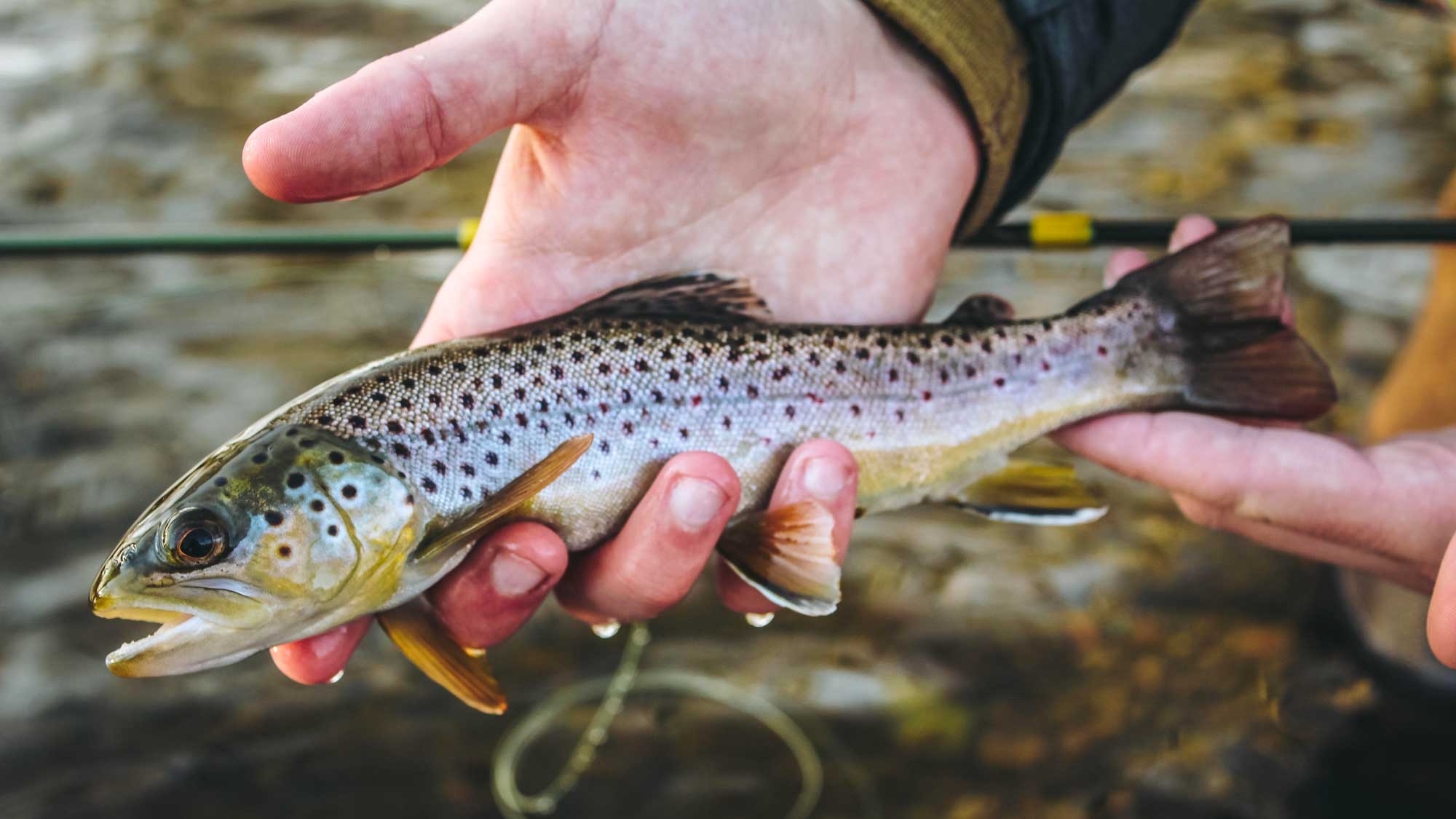

1 comment
jack bourque
like WOW I just started to tie up Leech flies then this site came up on a search like what great info. since I never fished with a Leech before I can hardly wait for winter to go away Thanks from Bathurst NB Canada
like WOW I just started to tie up Leech flies then this site came up on a search like what great info. since I never fished with a Leech before I can hardly wait for winter to go away Thanks from Bathurst NB Canada